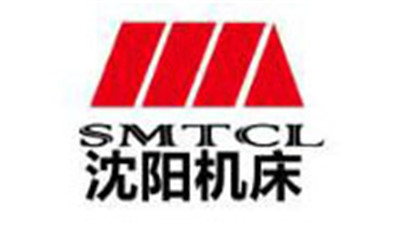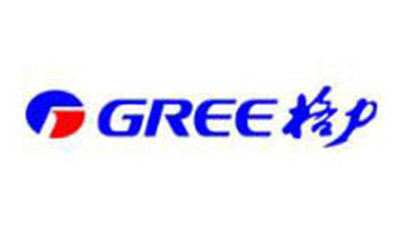Understanding the Importance of Core Type Transformers in Modern Electrical Systems
Table of Contents
- The Role of Core Type Transformers in Voltage Regulation
- Efficiency and Loss Reduction in Core Type Transformers
- Core Type Transformers: Design Considerations for Optimal Performance
- Applications of Core Type Transformers in Renewable Energy Systems
- Future Trends: Innovations in Core Type Transformer Technology
- Exploring the Advantages and Applications of Three-Phase Dry Type Transformers in Modern Electrical Systems
- FAQS
- Conclusion
- Related Posts
In today’s fast-changing world of electrical systems, Core Type Transformers are more important than you might think. They really play a big part in making energy use more more efficient and reliable. You’ll find them everywhere—from big industrial machinery to renewable energy setups. Industry reports predict that by 2026, the global transformer market could hit around $65 billion, and a big chunk of that is thanks to core type designs, mainly because they perform so well. Oh, and by the way, Dezhou Xinping Electronics Co., Ltd., started back in March 2001, is a high-tech company that specializes in the production of really precise electronic transformers. They’re all about keeping up with the latest tech, because they understand just how big a difference core type transformers can make in improving electrical systems. It’s pretty exciting to see how this drives innovation and helps build a more sustainable future in the electrical industry.

The Role of Core Type Transformers in Voltage Regulation
Core type transformers are pretty essential in today’s electrical setups, especially when it comes to keeping voltage levels steady. Basically, they have a core mostly wrapped by the winding, which helps with efficient magnetic coupling and reduces energy losses. This design is a real game-changer because it keeps voltage stable—something that's super important for making sure your electrical equipment runs reliably and performs well. In places where voltage swings can cause trouble, these transformers step in to deliver a consistent supply. That’s what makes them so critical in power distribution and industrial environments.
At Dezhou Xinping Electronics Co., Ltd., we’re all about making precision electronic transformers. We put a big focus on quality and efficiency. Thanks to advanced tech and strict quality checks, our transformers play a big part in managing voltage effectively across different systems. We’ve been around since 2001, and our passion for innovation keeps us pushing forward in this ever-changing electrical world.
When you’re picking a core type transformer for your project, it’s smart to think about how much load you'll have and what the environment’s like. Plus, routine maintenance and checks go a long way in making your transformer last longer and work more reliably—hey, it’s all about preventing surprises with voltage drops or spikes.
Efficiency and Loss Reduction in Core Type Transformers
Core type transformers are pretty essential when it comes to making modern electrical systems more efficient. One thing that really stands out about these transformers is their clever design, which helps cut down on energy losses while they’re running. I read somewhere—yeah, a report from the Electric Power Research Institute—that these transformers can hit efficiency levels of up to about 98.5%. That’s a big deal, especially since they lose way less power compared to the older shell-type types. The secret sauce? Well, it’s all about the smart core design that keeps magnetic flux leakages in check and cuts down on eddy current losses.
And get this—tech keeps improving. With better materials and manufacturing tricks, transformer cores are getting even better. For example, using amorphous steel for the core can slash core losses by around 30% compared to traditional silicon steel. That’s not only good news for the transformers’ performance but also helps save money in the long run and is better for the environment. As industries tighten up on energy efficiency standards, it’s clear that going with core type transformers is becoming more and more important for building sustainable and cost-effective power systems.
Core Type Transformers: Design Considerations for Optimal Performance
Core type transformers are pretty essential in today’s electrical setups. They do the heavy lifting of transforming voltages efficiently and keeping things isolated when needed. When folks are designing these transformers, there are a few important things to keep in mind to make sure they run smoothly. First off, choosing the right core material matters a lot—things like silicon steel or ferrite are popular because they have awesome magnetic properties. These materials help cut down on energy losses caused by things like hysteresis and eddy currents, which is a big deal for efficiency.
Then, there's the shape and layout of the core itself. How you design the core can actually make a difference in how well the magnetic fields couple between the primary and secondary coils. Good design here can mean better voltage regulation and less leakage inductance. Also, the thickness of the core and how you layer it impacts the overall size and weight of the transformer—so finding that sweet spot between performance and practicality is key. When all these factors are considered, engineers can build core transformers that not only meet the demands of modern power systems but do so reliably and efficiently, no sweating it too much.

Applications of Core Type Transformers in Renewable Energy Systems
Core type transformers are pretty essential in today's electrical setups, especially when it comes to renewable energy. They're built to handle higher voltages smoothly, which is why they're so good at hooking up various green sources like wind and solar power into the wider grid. If you’ve been keeping an eye on the energy scene, you probably saw that, according to the International Energy Agency, renewable installations honestly blew up in size—wind and solar capacity topped over 2800 GW in 2022. That just goes to show how much we need reliable, efficient transformers that can keep up.
In renewable energy systems, these core transformers do a lot of heavy lifting—they manage voltage levels and provide isolation between different parts of the grid. Their compact design and high efficiency are a big plus, helping to cut down on energy losses during transmission. As the world pushes harder towards decarbonization, these little guys become even more critical. For example, a report from the U.S. Department of Energy mentioned that high-efficiency transformers can cut energy losses by up to 3% compared to older, traditional ones. That might not sound like a lot, but it really adds up over time, boosting the entire system’s performance. As renewable energy keeps gaining ground, it’s clear that core type transformers are a backbone of a sustainable, greener future—and they’re not going anywhere anytime soon.
Understanding the Importance of Core Type Transformers in Modern Electrical Systems - Applications of Core Type Transformers in Renewable Energy Systems
| Transformer Type | Power Rating (kVA) | Application Area | Efficiency (%) | Renewable Energy Source |
|---|---|---|---|---|
| Core Type Transformer | 500 | Wind Turbine | 98 | Wind |
| Core Type Transformer | 300 | Solar Farm | 97 | Solar |
| Core Type Transformer | 1000 | Hydropower Station | 99 | Hydro |
| Core Type Transformer | 200 | Biomass Facility | 95 | Biomass |
Future Trends: Innovations in Core Type Transformer Technology
Looking ahead, the future of core type transformers is looking pretty promising, with some exciting innovations in materials and tech on the horizon. Industry forecasts suggest that by 2025, the global transformer market could hit around $72.7 billion, and core type transformers are gonna be a big part of that growth, mainly because they're so efficient and dependable.
 One of the coolest developments is the use of amorphous steel cores — these can cut energy losses by up to 70% compared to the old-school silicon steel ones. That’s a game changer for design and efficiency. Plus, it helps out with global sustainability goals since it reduces the energy our electrical systems need to run.
One of the coolest developments is the use of amorphous steel cores — these can cut energy losses by up to 70% compared to the old-school silicon steel ones. That’s a game changer for design and efficiency. Plus, it helps out with global sustainability goals since it reduces the energy our electrical systems need to run.
And it’s not just about new materials — smart tech is really making its mark on these transformers too. With IoT sensors, we can keep a real-time eye on how they’re doing—spotting issues before they become big problems and avoiding unnecessary downtime. A report from Allied Market Research says that smart transformer tech is expected to grow at about 6.1% annually from 2020 to 2027. All these innovations make it clear that core type transformers are still super important in today’s electrical setups, especially as we demand more reliable and efficient energy distribution. It’s an exciting time for this technology, no doubt!
Exploring the Advantages and Applications of Three-Phase Dry Type Transformers in Modern Electrical Systems
Three-phase dry type transformers offer significant advantages in modern electrical systems, particularly due to their enhanced safety and efficiency. Unlike oil-filled transformers, dry type transformers utilize air as a cooling medium, reducing the risk of fire hazards and environmental contamination. This makes them an ideal choice for applications in confined spaces or areas where environmental sustainability is a priority.
The versatility of three-phase dry type transformers is evident in their broad range of applications. They are particularly well-suited for servo driver power supplies, which require reliable and stable power delivery for optimal machine performance. Additionally, these transformers play a crucial role in renewable energy sectors, such as wind and photovoltaic power generation, where they help to efficiently convert and distribute electrical energy generated from natural resources. Their durability and low maintenance requirements also make them an attractive option for industries utilizing CNC machine tools and other mechanical systems, ensuring long-term operational reliability and reduced downtime.
FAQS
: Core type transformers are primarily used for efficient voltage transformation and isolation in modern electrical systems, particularly in renewable energy applications.
They achieve high efficiency ratings, up to 98.5%, through optimized core designs that minimize energy losses, including magnetic flux leakage and eddy current losses.
Advanced materials such as amorphous steel and silicon steel are used to improve efficiency by reducing core losses, with amorphous steel potentially lowering losses by up to 30% compared to traditional silicon steel.
Key design considerations include the selection of core material, geometric configuration, and layering techniques, all of which influence efficiency, performance, and practicality.
Core type transformers enable higher voltage handling, facilitate integration of renewable sources like wind and solar into the grid, and improve voltage regulation and isolation.
Their high efficiency leads to reduced energy losses during transmission, contributing to better overall system performance, especially in renewable energy applications.
As industries face stringent energy efficiency regulations, core type transformers become vital for creating sustainable and economically viable electrical systems.
Core type transformers significantly reduce losses compared to traditional shell-type transformers, thanks to their advanced design and materials.
The global capacity for wind and solar power has exceeded 2800 GW in 2022, highlighting the growing need for reliable transformer solutions in this sector.
Reports indicate that high-efficiency transformers can reduce energy losses by up to 3% compared to traditional transformers, enhancing overall system performance.
Conclusion
Core Type Transformers are pretty essential when it comes to modern electrical systems. They do a lot of heavy lifting, especially in managing voltage and boosting efficiency. Honestly, these transformers are all about reducing energy losses and making sure everything runs smoothly — which is why they're so critical for dependable power distribution. When designing them, a couple of key things matter a lot: choosing the right materials and getting the configuration just right. These details really impact how long the transformers last and how well they perform.
But it’s not just about traditional uses anymore. These days, Core Type Transformers are getting some serious attention in renewable energy setups too. They’re supporting sustainable solutions, which is pretty exciting. As tech keeps moving forward, we’re seeing new designs that promise even better performance and flexibility — basically, they’ll be more capable of meeting the ever-changing needs of the energy world.
At Dezhou Xinping Electronics Co., Ltd., we’ve been making strides in this field since 2001. As a high-tech company committed to innovation, we focus on producing precision electronic transformers that stay ahead of the curve, ensuring our products are top-notch when it comes to quality and cutting-edge design.
Related Posts
-

Understanding Current Potting Transformers: The Backbone of Modern Electrical Systems
-

Innovative Solutions for Optimal 33kv Transformer Performance
-

Understanding the Importance of Three Phase Transformers in Modern Energy Systems
-

Understanding the Versatility of 10kva Transformer Applications in Various Industries
-

Understanding the Challenges Faced with Converter Transformers in Industrial Applications
-

Ultimate Guide to Mastering Lead Transformers for Business Growth
Blog Tags:


















